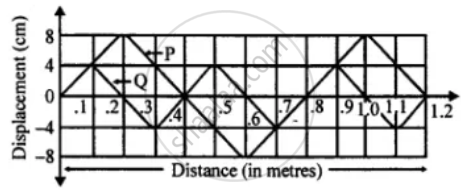Advertisements
Advertisements
Question
Explain meaning of the terms compression and rarefaction in relation to a longitudinal wave.
Solution
A longitudinal wave propagates by means of compressions and rarefactions.
When a vibrating object moves forward, it pushes and compresses the air in front of it creating a region of high pressure. This region is called a compression (C), as shown in Fig. This compression starts to move away from the vibrating object. When the vibrating object moves backwards, it creates a region of low pressure called rarefaction (R), as shown in Figure .

Compressions are the regions of high density where the particles of the medium come very close to each other and rarefactions are the regions of low density where the particles of the medium move away from each other.
APPEARS IN
RELATED QUESTIONS
Calculate the wavelength of a sound wave whose frequency is 220 Hz and speed is 440 m/s in a given medium.
What is the nature of sound waves in air?
When we change a feeble sound to a loud sound, we increase its :
The separation between two consecutive crests in a transverse wave is 100 m. If wave velocity is 20 m s-1, find the frequency of wave.
What do you understand by the term sound energy?
The wavelength of the vibrations produced on the surface of water is 2 cm. If the wave velocity is 16 ms-1, calculate:
- no. of waves produced in one second
- time required to produce one wave.
From diagram given below calculate:
- velocity of P and Q
- frequency of P, when frequency of Q is 512 Hz.
Assume that both wave are traveling in same medium.

How does the speed of sound depend on (i) Amplitude, and (ii) Wavelength?
Sound can travel through solids, gases, liquids, and even vacuum.
Name three animals which can hear ultrasonic vibrations.
